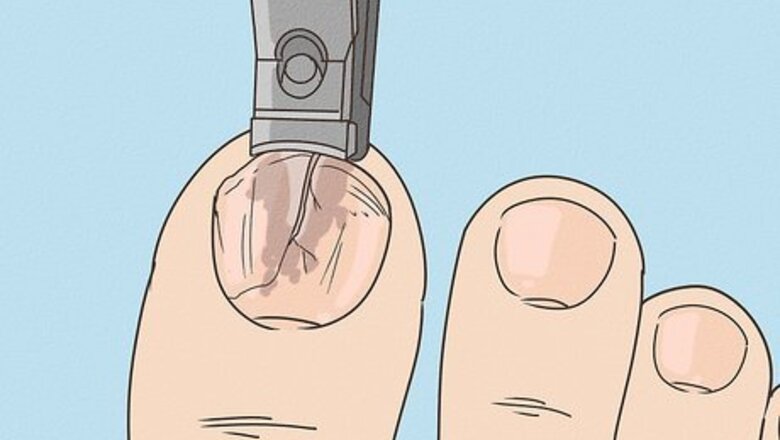
views
- Trim any unattached portions of the nail off. Clean the area thoroughly with soap and water to prevent infection.
- Cover the nail in petroleum jelly, then wrap it with a bandage. Change the bandage once a day, or whenever it gets wet.
- Relieve pain by icing your toe for 20 minutes every 2 hours. Take OTC pain relievers to help minimize discomfort and swelling.
- See your doctor if you notice signs of infection, like increased redness, increased swelling, or pus.
Home Care
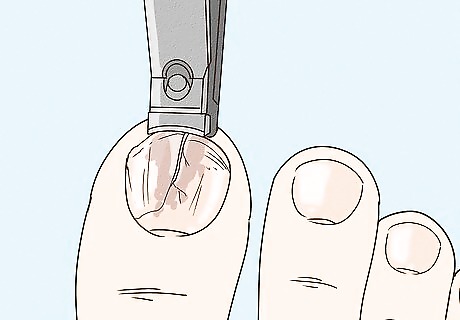
Trim the unattached nail off. If a portion of the nail is unattached, gently clip it with clean nail clippers as close to the cuticle or to the attached area as possible. Whatever is still attached, leave it attached. File any part of the leftover nail so that it’s smooth. This will help you avoid catching it on socks and bedding. Don't rip at your toenail when you cut it, because you don't want to cause bleeding. If you're not able to cut the toenail without cutting into your skin, see a doctor for treatment.
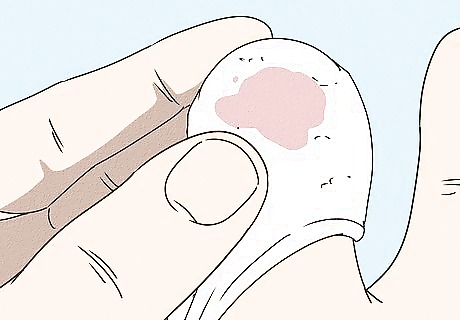
Stop any bleeding by applying direct pressure. Use a cloth or a gauze pad to press gently onto your toenail if it’s bleeding. Keep pressure on the area for about 10 minutes, or until the bleeding stops. If the bleeding hasn’t slowed after 15 minutes of pressure, seek medical care. Not all detached toenails are caused by injury. If you are dealing with toenail fungus, you probably won’t have any bleeding to worry about.
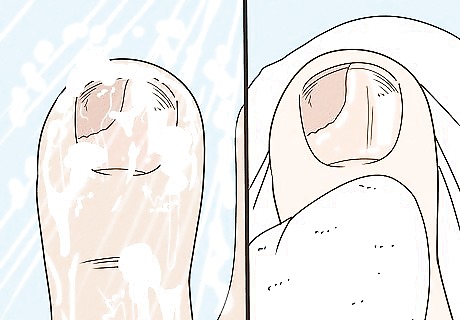
Clean the wound thoroughly with soapy water. Get your toe wet, then gently wash the area with a soapy washcloth. Scrub off any dirt or blood from around the affected area. Cleaning up now will help prevent infections later on. Gently pat the area dry with a clean towel or washcloth. Do not rub the area, which might cause more bleeding.
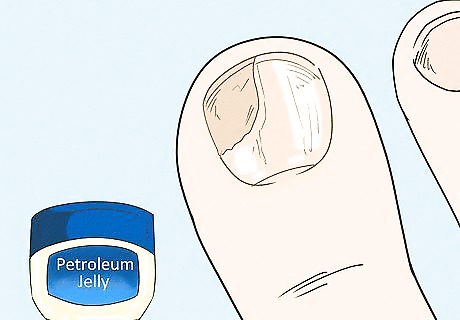
Cover the nail in petroleum jelly. When your toe is clean and dry, spread a thin layer of petroleum jelly over the torn area. This will help keep the toe moisturized and promote healing. If you’re worried about infection or your doctor recommends it, apply Neosporin to help fight off bacteria.
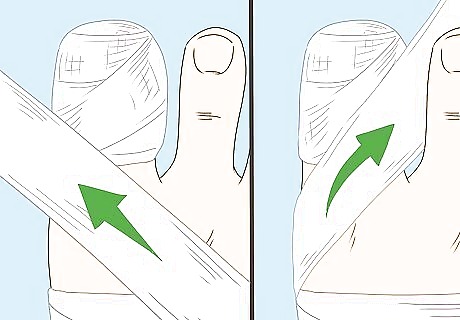
Put a bandage on your toe. Apply a gauze pad or apply a bandage over the injured toe, then wrap the toe with medical tape several times to keep the bandage in place. Change the bandage every day, or whenever it gets wet. Don’t wrap your toe so tightly that it turns red or purple or loses feeling. The wrapping should stay in place and be snug, but not be uncomfortably tight. Ideally, put a new bandage on your toe each night before you go to bed. This will protect your injured nail from snagging on bedding or hitting something while you sleep.
Minimizing Discomfort
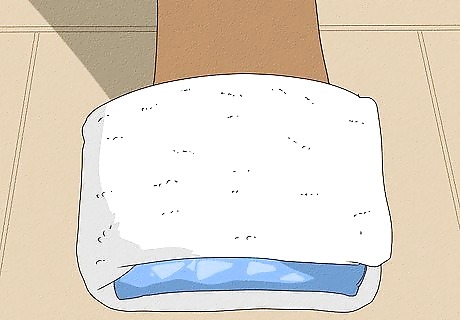
Ice your toe for 20 minutes every 2 hours. To heal your toe injury and reduce swelling, use an ice pack wrapped in a towel for 20 minutes at a time. On the first day, do this every 2 hours; after that first day, ice your toe every 3 to 4 hours. Always wrap an ice pack in a towel to avoid hurting your skin.
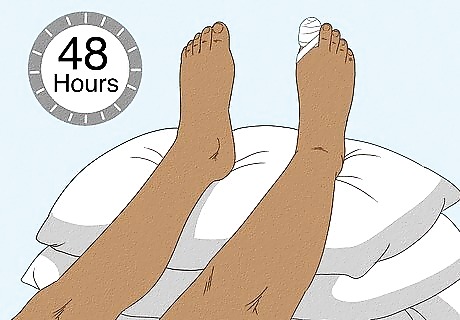
Elevate your foot above your heart. If your toe is throbbing, lie down and elevate your foot with pillows to above the level of your heart. This will greatly reduce swelling and help minimize any pain or discomfort. Do this for the first 48 hours after being injured.
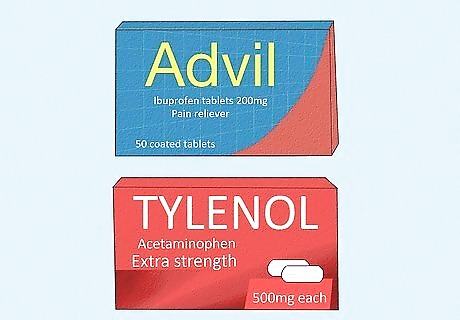
Take OTC pain relievers. Ibuprofen and naproxen will reduce swelling and improve your pain. Acetaminophen will not help with swelling, but it will help with pain. You can get these at your pharmacy without a prescription. Follow the dosage instructions on the package. If you have heart disease, kidney problems, high blood pressure, or have ever had stomach ulcers, talk to your doctor before using these medications.
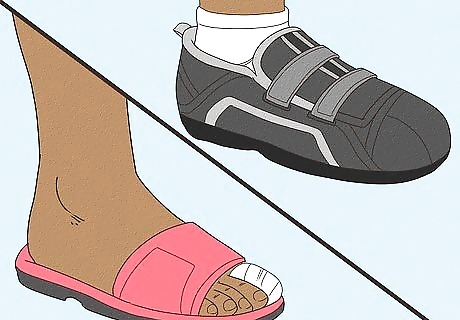
Wear open or loose shoes for several weeks. Tight shoes will put uncomfortable pressure on your injured nail. Wear open-toed or loose fitting shoes to relieve pressure and improve healing. Do this as long as you need to in order to be comfortable.
When to See a Doctor
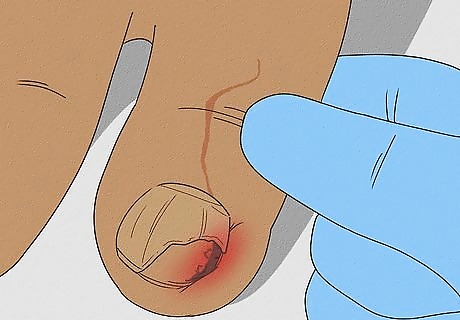
Seek medical care if you have signs of infection. No matter how well you take care of your injury, you might still get an infection. If your toe is infected you might see red streaks running up your toe, foot, or leg. You might get a fever of 100.4ºF (38ºC) or higher. Pus—thick, white or colored drainage from the injury—is another sign of infection. See your doctor if any of these signs occur, because infections can be serious. Your doctor will prescribe you antibiotics to treat an infected toe. Take these as prescribed and until they’re gone.
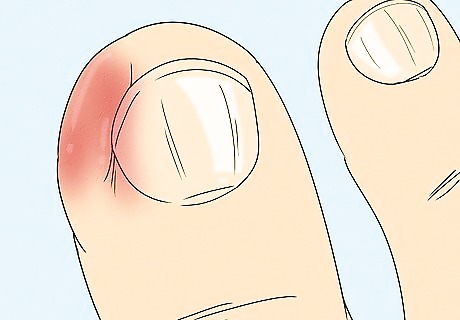
Visit your doctor if you have worsening pain, redness, or swelling. See your doctor if your pain is severe enough to interfere with sleep or daily activities, does not improve 2 hours after taking pain medicine, or gets worse over time. If you have swelling that gets worse or does not improve after medicine, ice, and elevating your foot, get help. Some swelling is to be expected, especially right after you suffered a torn nail. However, see your doctor for severe swelling, or swelling that worsens after a few days, as it could indicate an infection. Ask questions like, "My toe hurts more today than it did yesterday and Tylenol isn't helping, is that okay?" or "How much swelling is normal?"
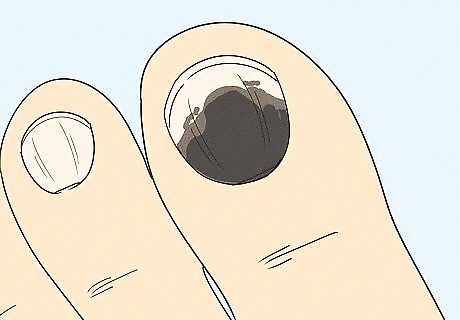
Get checked out if your nail turns black and blue. Sometimes, a crushing injury to a toenail (like having a heavy object dropped on your toenail) can cause a “subungual hematoma,” or bleeding underneath the nail. This creates a little pocket of blood under the nail, which can be uncomfortable because of the pressure. It looks like a dark blue, black, or purple bruise like splotch beneath your nail. If the bruise is less than 1/4 of the size of the nail, it will probably resolve on its own. Otherwise, see your doctor, because you may need to have the fluid drained from under the nail to prevent further pain and injury. Your doctor will drill a very small hole in your toenail to let the blood drain out. This procedure shouldn’t hurt, and draining the blood will make your toe feel better because it relieves the pressure.
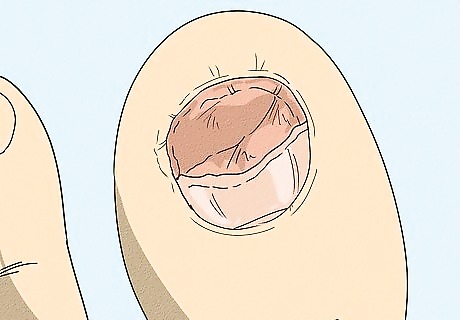
See your doctor if there’s visible damage surrounding the torn nail. Whether your toenail will regrow normally depends on whether or not the nail bed was damaged. If you’re worried about how your nail might look when it grows back, speak to your doctor about the possibility of a small surgery on your nail bed. If you can see visible damage to your tissue around your nail, like any tears, see your doctor. If the nail bed or nail matrix are very damaged, your nail might not grow back or might look different, but some problems are fixable. Do not attempt to cut your torn toenail yourself if doing so would cause you to bleed. It may take 6 to 12 months for a toenail to completely regrow.
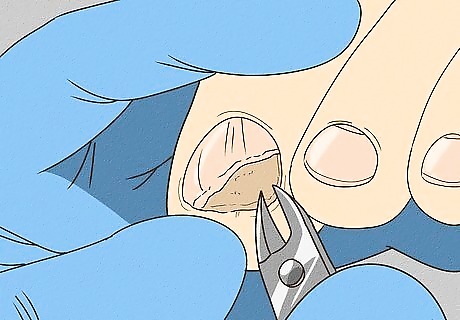
Ask for help if you can’t get the wound clean. If you spend 15 minutes or more trying to scrub your injury clean, and you still see dirt or debris in it, get medical help. It’s really important to thoroughly clean the wound to prevent infection, so if you can’t do it on your own you need someone who can. Depending on how you hurt your toe, you might also need a tetanus shot or tetanus booster. If the cut is dirty and it has been 5 years or more since your last booster, then you will need a tetanus shot.
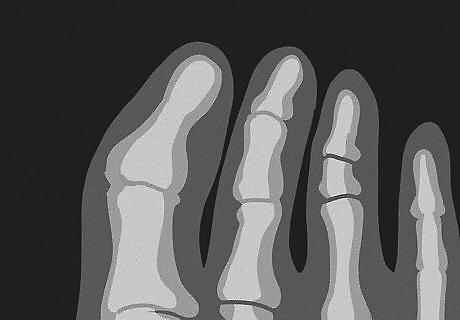
Go for an x-ray if your toe is immobile or looks crooked. Many injuries that cause nail avulsion can also cause broken bones. Check your injured toe to see if it bends and straightens all the way. If not, or if it’s sticking out at an odd angle, it’s worth checking to see if it’s broken. Get emergency care for an x-ray and proper treatment. Broken toes typically heal well on their own, as long as you splint them.















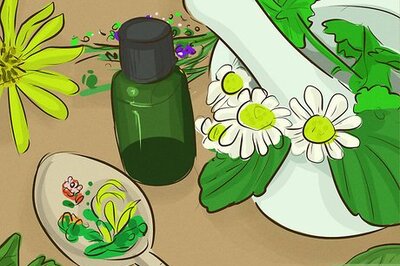



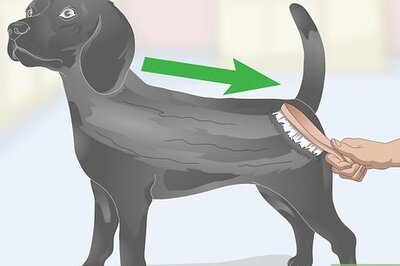
Comments
0 comment